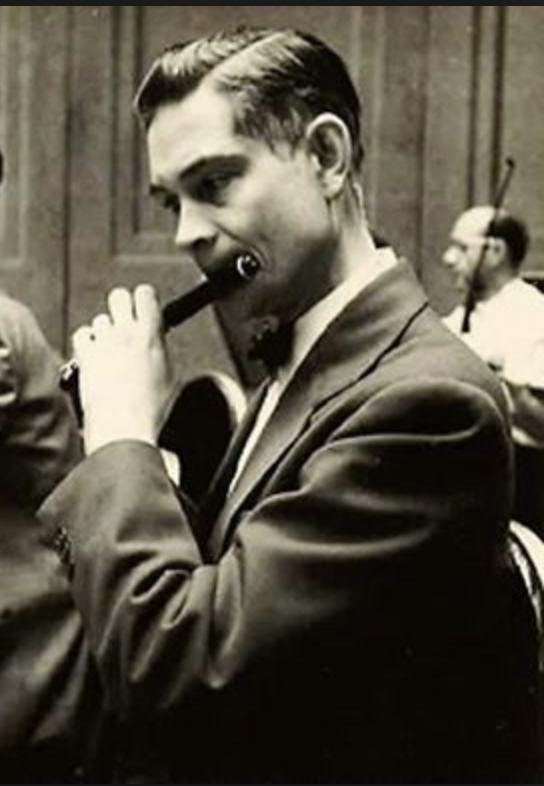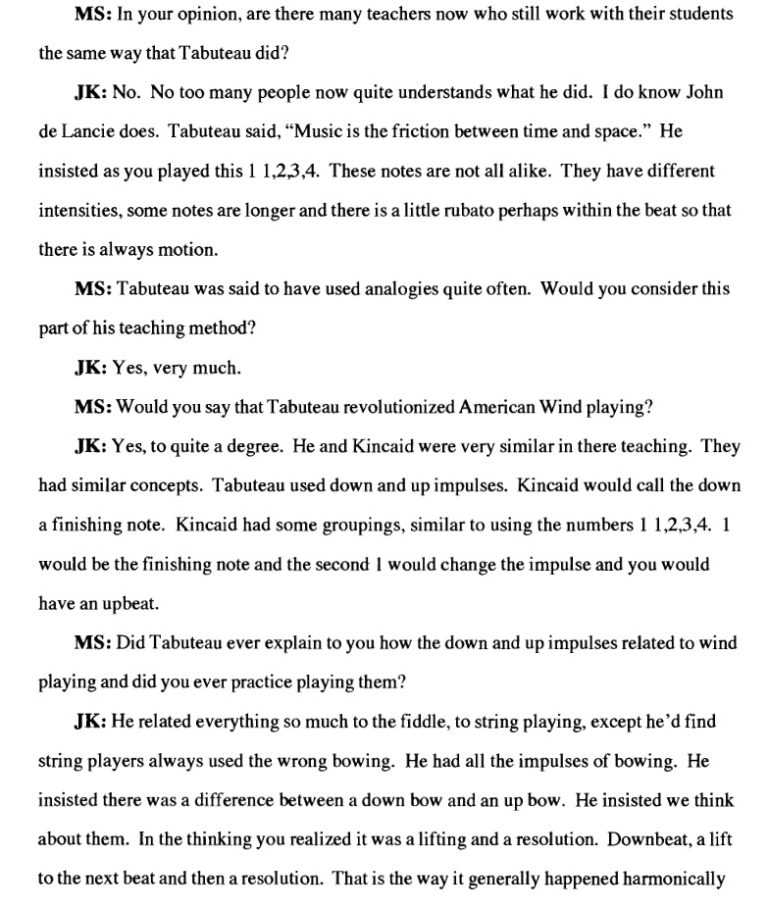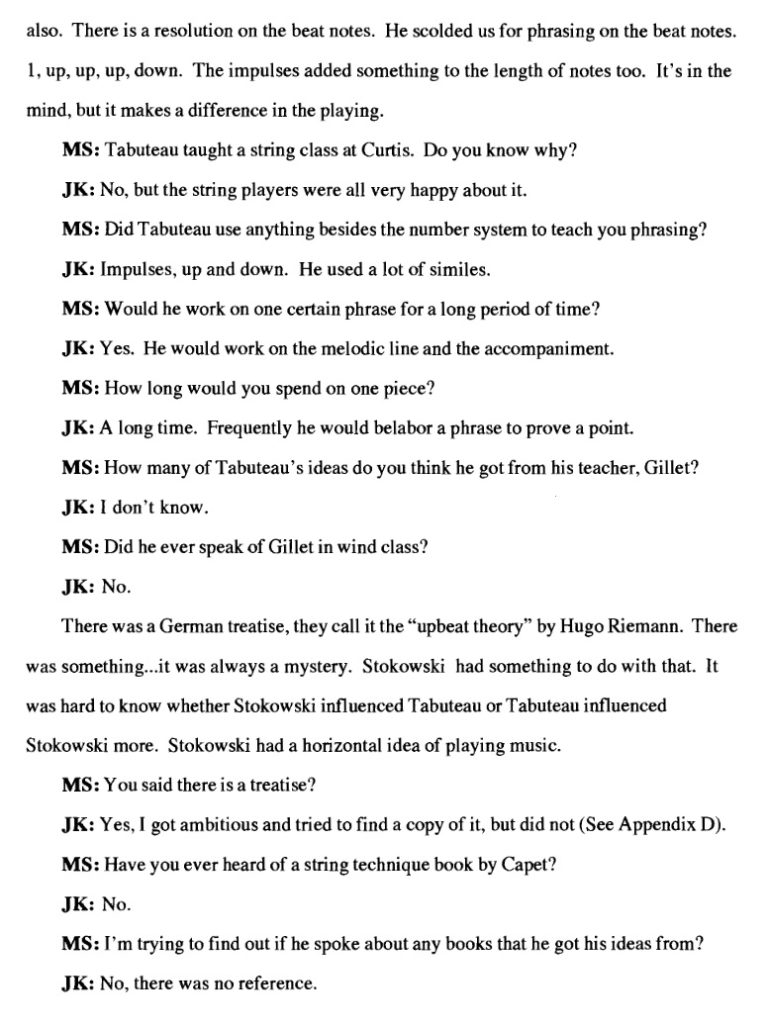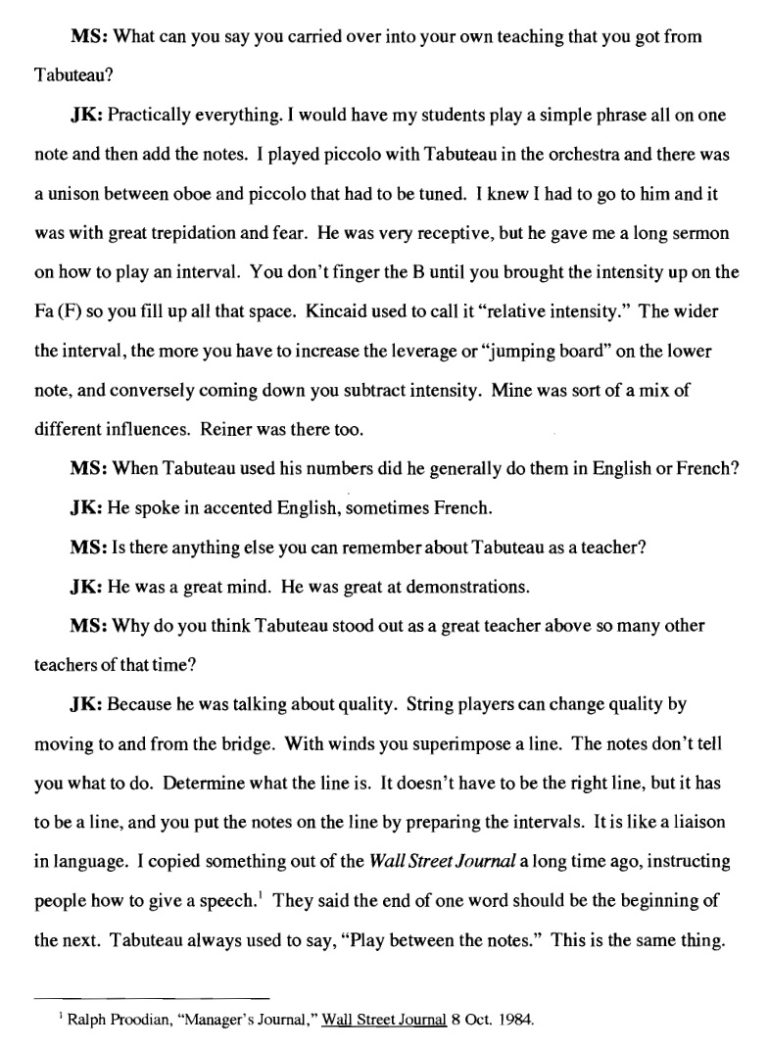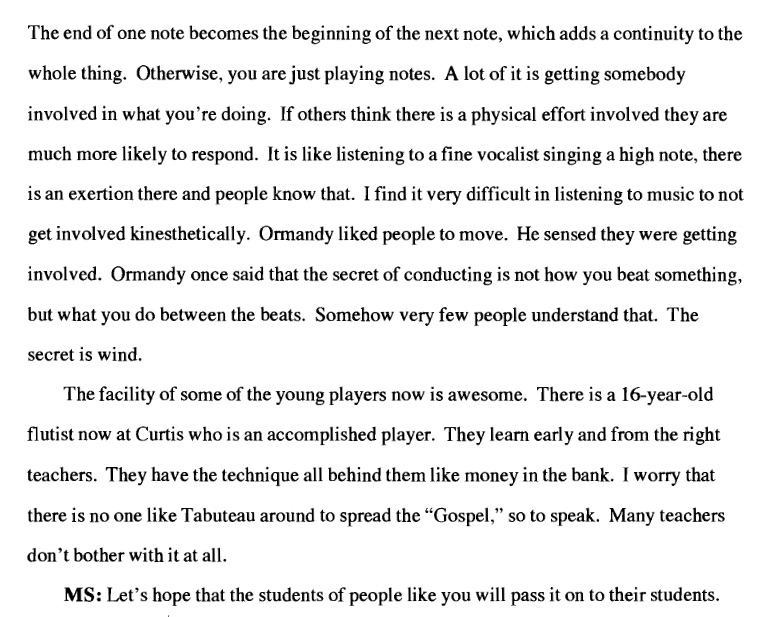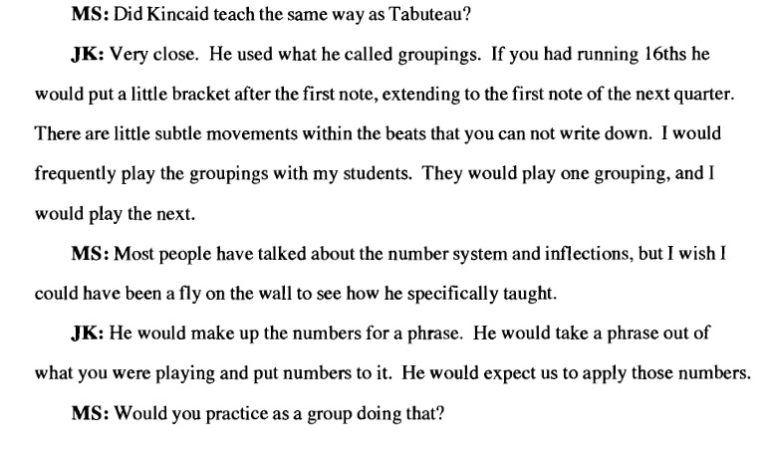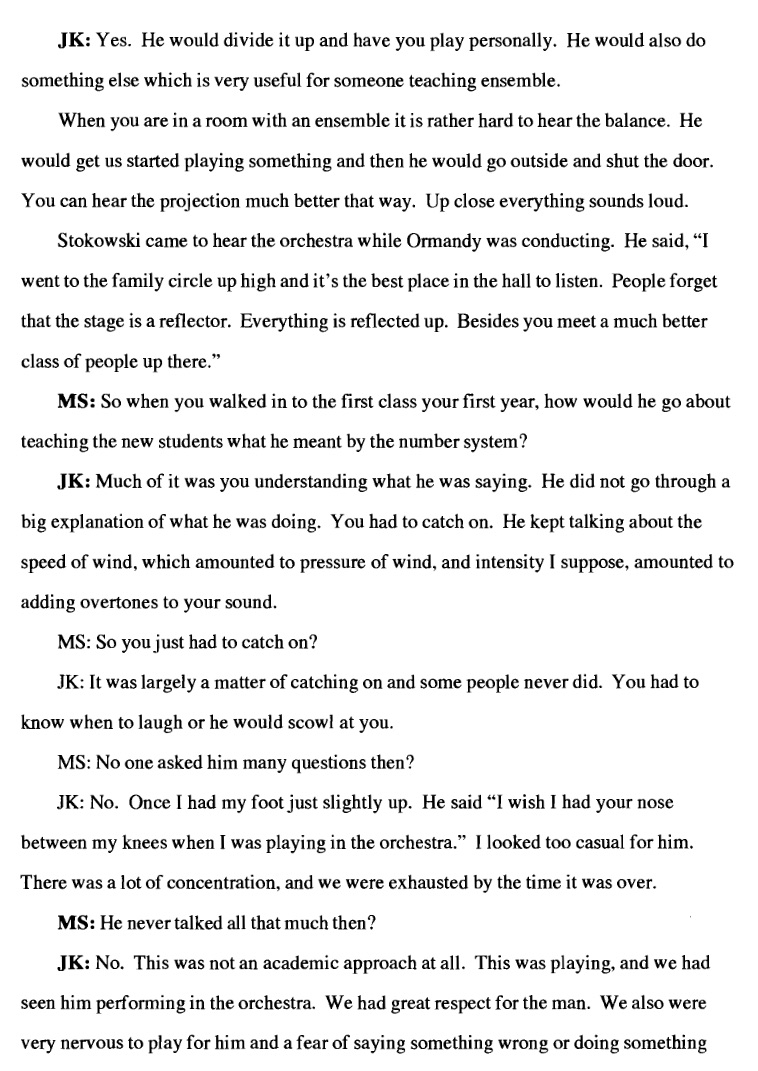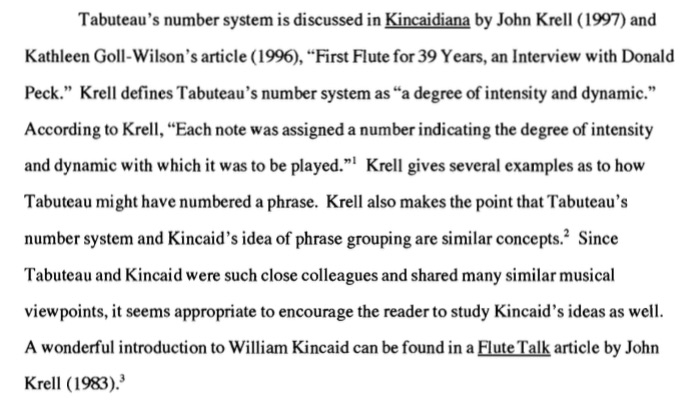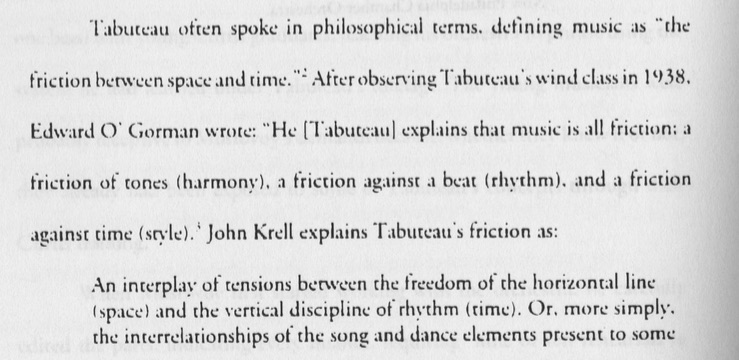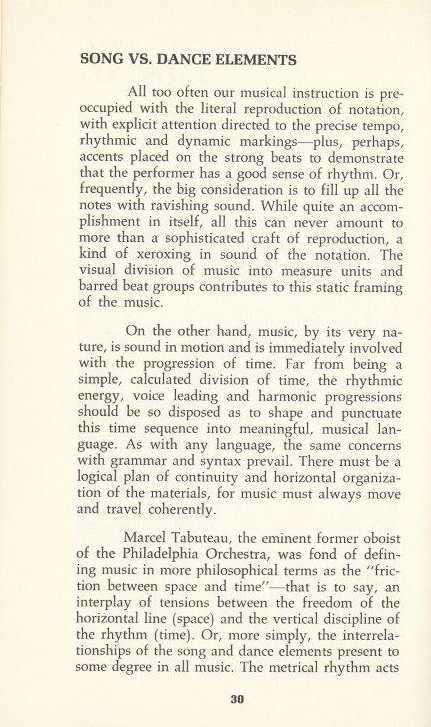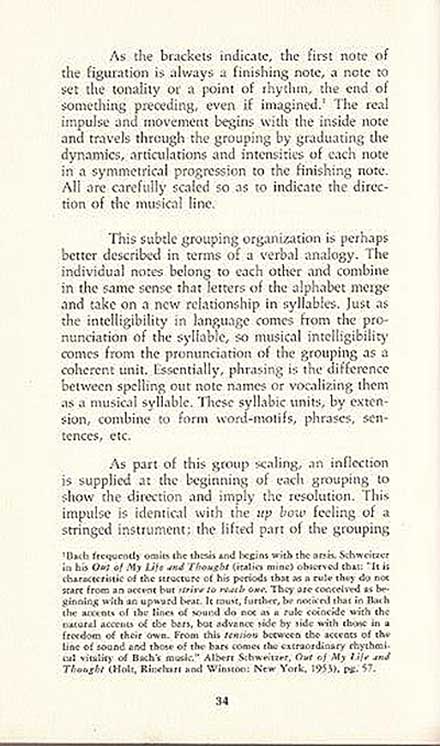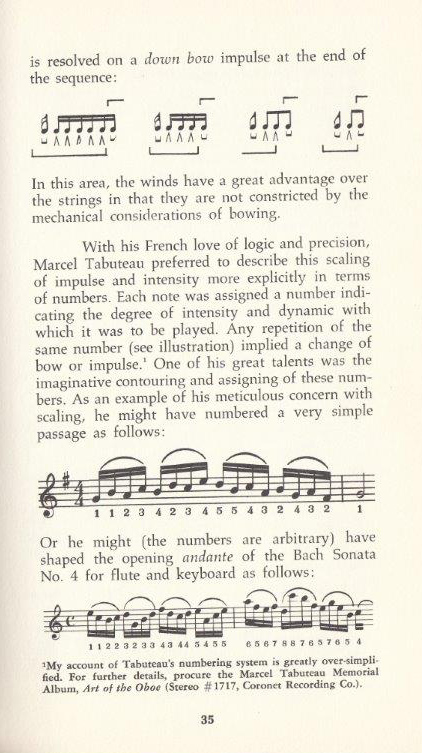John Krell (1914–1999) received a Bachelor Music degree from the University of Michigan in 1937 majoring in flute. Following his graduation, he attended the Curtis Institute of Music from 1938 to 1941 studying flute with William Kincaid and participating in Marcel Tabuteau’s woodwind ensemble class. Taking notes, he later made them into a book entitled Kincaidiana, A flute player’s notebook. While a student at Curtis, he substituted with the Philadelphia Orchestra, later becoming its piccolo player for 29 years. In addition to his book, he discusses various aspects of the Tabuteau System in detail at an interview with Melisa Stevens in 1998:
The above is an extract from Melissa A. Stevens’ 1999 dissertation Marcel Tabuteau: Pedagogical Concepts and Practices for Teaching Musical Expressiveness: An Oral History.
Needless to say, the fundamental reed placement of the oboist is near (Tabuteau said “on”) the tip of the reed, but for the high register or for a more strident quality the player must move toward the “string.” Tabuteau’s admonition, “Very important; avoid the crocodile bite with an immobile embouchure,” is to be taken very seriously.
In connection with this, John Krell has advised, “Think of tone in terms of a cork ball supported in the air by a column of compressed air. Tone is like this ball. Once suspended, it need only be supported by the breath.”
The above is an extract from Donald Hefner’s 1984 dissertation: The Tradition of the Paris Conservatoire School of Oboe Playing with Special Attention to the Influence of Marcel Tabuteau.
The above has been excerpted from Sarah Maude Wetherbee’s 2002 dissertation: Marcel Tabuteau’s Influence on String Playing at the Curtis Institute of Music: a Philosophy of Twentieth-Century Performance Practice.
The above are excerpts from Krell, John. Kincaidiana. Culver City (CA): Trio Associates, 1973.
More on John Krell

